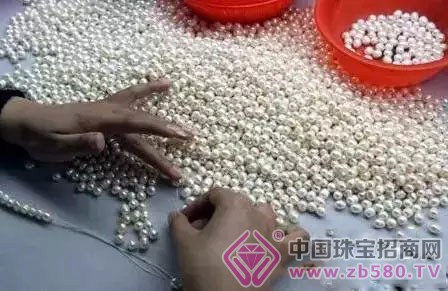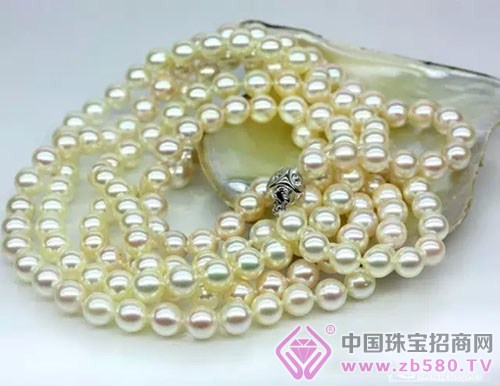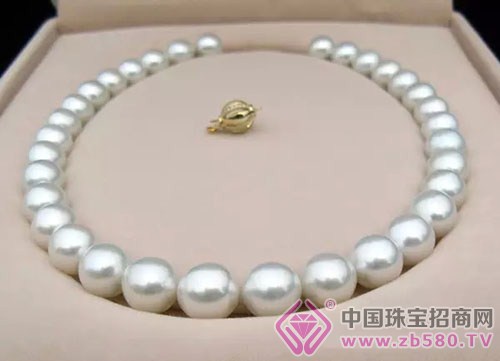Pearl's origin and value
1. What are the origins of pearls? Freshwater pearl China is the world's largest pearl producer and country, and its output accounts for more than 95% of the world's total pearls, but almost all of them are freshwater pearls. Zhejiang Zhuji is the most famous hometown of Chinese pearls. In addition, Jiangsu, Hunan, Hubei, Jiangxi, Anhui and other places also have breeding. Traditionally, the freshwater pearls generally adopt the technique of non-nuclear culture, that is, the mantle film of the same kind of mother-of-pearl is implanted into the mother shell. After the pearl grows, the roundness is often poor and the particles are small. In recent years, the pearls cultivated by the freshwater nuclear culture technology, namely Edison Pearl, are very impressive in terms of roundness, skin light and color, so that the Chinese cultured pearls have the first time in the international high-end market. The long-term variety with Nanyangzhu has great potential for future development. Seawater beads Akoya Japanese sea pearl motherfish is Marsh's shell, which is mainly produced in the Seto Inland Sea in Japan and is also cultivated in the South China Sea. The body color is white, the color is mostly pink, and the size is between 2mm-9mm. Because the water temperature in Japan is low and the growth period is long, the Akoya beads generally have a strong luster, but the disadvantage is that the surface is much ruthenium. The high-quality Akoya beads are called “flower beads†in the industry, and the best products in “flower beads†are called “天女â€, which is subject to the certificate issued by the Japan Pearl Research Institute. Nanyang White Pearl is produced in the northwestern part of Australia. The area is sparsely populated, with clean water, suitable water temperature, open bay, and typhoon. It is good for the survival of the big pearl motherfish, also known as the white butterfly shell. Nanyang white pearls are large and round, mostly more than 10mm, with a silvery white luster, elegant and romantic, beautiful and pure, the price of white beads above 14mm is particularly high. Nanyang Jinzhu is mainly produced in the Philippines, Myanmar, Indonesia and other places. It is produced in the golden lip shell. Due to the huge size of the mother shell, it can breed 9-17mm diameter pearls. The color is more pale gold, the Philippine gold beads are reddish, and the pearls in Myanmar are shallow, so the diameter is more than 13mm. The production of thick gold is very small and very expensive. Tahitian Black Pearl Tahiti, also known as Tahiti, is the largest island of the French Polynesian Windward Islands, located in the South Pacific Ocean between Australia and South America, a region rich in “black lipsâ€. Secreted with pearls. The black pearl of Tahitian is mainly black, and it can also be seen in gray, brown and chocolate. The color is very rich. There are malachite green, gray green, rich purple, sea blue, orange red and even rainbow color. Cool beauty. The price of the black pearl with the rich color is several times that of the person without the color or the monotony. 2, what is the pearl? The quality of pearls directly affects the price. There are five indicators for evaluating the quality of pearls. Generally, all indicators are relatively balanced, and those with excellent indicators are the best. The shape is best in a perfect circle, the shape of a drop is also a favorite, and the pearl that grows into an irregular shape is called a Baroque bead by the West. It can often have a different effect under the designer's whimsy. The color of the color pearl has two parts in people's visual perception. One is its own body color, which is determined by the pigments and trace elements contained in the pearl, and the other is the halo color, which is the accompanying color, due to optical effects such as diffraction. It is rich or rare in body color, and the price is high. The gold beads generally do not carry the color, so there are those with color. In the traditional sense, the size of freshwater pearls is small. There are “seven-point beads and eight-point treasuresâ€, that is, freshwater pearls above 8mm are relatively rare, but now Edison’s emergence of nuclear pearls has completely subverted the freshwater The traditional recognition of pearls, Edison pearls can mostly be more than 8mm, and 14mm or more can also be cultivated. Gloss When the light hits the pearl, the laminated structure of the nacre layer, through the optical effects of reflection, refraction, diffraction, etc., will form a special soft and dazzling brilliance called "pearl light". The longer the pearl grows, the thicker the bead layer and the smoother the surface, so the high-quality pearl has a strong surface and a longer shelf life. The surface smoothness of the old saying "nothing is not a pearl", the surface of the pearl often has signs of growth, such as needle eye, waist line, wrinkles, bumps, pits and scratches, etc., too much will obviously affect the value of the pearl, and Perfectly flawless pearls are rare. When the weather gets cold, a coat is essential SHAOXING LIDONG TRADING CO.,LTD , https://www.lidonggarments.com


Our coat fabric is of high quality and good workmanship, which is essential for the spring and Autumn period
